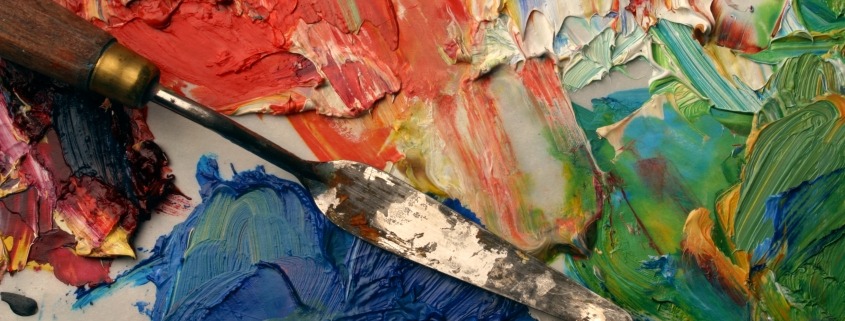5 Oil Painting Techniques to Try
If you are looking for more ways to experiment with oil paint, these techniques will help you get to the next level!
When practicing these techniques, keep in mind these three oil painting principles: fat over lean, thick over thin, and slow-drying over fast-drying. All three of these rules essentially boil down to this: each subsequent layer of paint should become progressively thicker and more slow-drying than the previous. Why? A thin layer painted on top of a thick layer of oil paint will crack and sometimes even flake off.
Scumbling
Scumbling is a great way to bring more texture into a painting. It is a type of dry brush painting technique that involves applying a thin layer of paint using a stiff, bristle brush that is dry. This textured layer is typically applied over the previous dry layer painted on the canvas. Scumbling is mostly done over dry paint, but it can still be achieved over wet paint. However, if done over wet paint, the artist should be careful not to blend the paints together.
The goal when using scumbling is to allow the first layer painted to still show through the scumbled layer. Scumbling was first developed with oil painting in mind, but this technique can be used with other mediums, such as acrylic and watercolor.
The achieved effect of scumbling adds increased depth and texture while displaying the underpainting. It is a great way to break up visual monotony. It provides the opportunity for color variation, produces atmosphere, highlights darker backgrounds, and allows for smooth transitions from one area to another. Scumbling was often used by both Claude Monet and J.M.W. Turner.
Chiaroscuro
Translated from Italian to mean “light dark,’ chiaroscuro refers to the significant contrast between light and dark. This technique arose during the Renaissance, in which artists like Rembrandt and Caravaggio created noticeable contrasts between light and dark for a three-dimensional effect. Chiaroscuro increases the drama in a painting by pushing the subject forcefully into the foreground. It is recommended when using this technique to start with the light focus (a lamp, candle, flashlight, etc.) and work outwards from there.
Glazing
Glazing is a popular oil painting method first used in the Renaissance. Glazing requires painting thin transparent layers over an opaque base layer. To use the glazing technique, artists will first need to create a monochrome underpainting using opaque colors. As each layer of glaze is applied atop the underpainting, it will change hues and take on a glossy finish.
The glaze will give the painting a beautiful multi-faceted effect, add dimension, and create rich, glowing color. However, glazing is a slow laborious process as the artist must wait for each layer of glaze to dry before applying the next layer. This technique can often be seen in Vermeer’s art.
Alla Prima (Wet-on-Wet)
Alla prima, or wet-on-wet painting, is a more challenging technique to use with oil paints. It requires painters to apply wet paint on to a wet surface without letting previous layers completely dry. This allows painters to directly mix and blend colors on their canvas as well as complete a painting in one sitting. Many Impressionist masters used this technique to paint landscapes at a certain time of day and capture evasive details as fast as possible. For artists who like to finish paintings in one sitting, Alla Prima is a welcome method.
Impasto
Impasto painting was a key feature in many of Van Gogh’s oil paintings. It involves painting thick strokes of paint onto a canvas. These deliberately heavy brushstrokes are visible on the canvas. Impasto is often called a bolder technique because the artist’s brushwork remains visible once the painting is finished. However, it adds dimension, texture, and movement. For example, impasto can help achieve the illusion of distance by building up thick paint in the foreground and gradually thinning paint as the background lessens. Artists can use a brush or even a palette knife to achieve the impasto technique.





Leave a Reply
Want to join the discussion?Feel free to contribute!